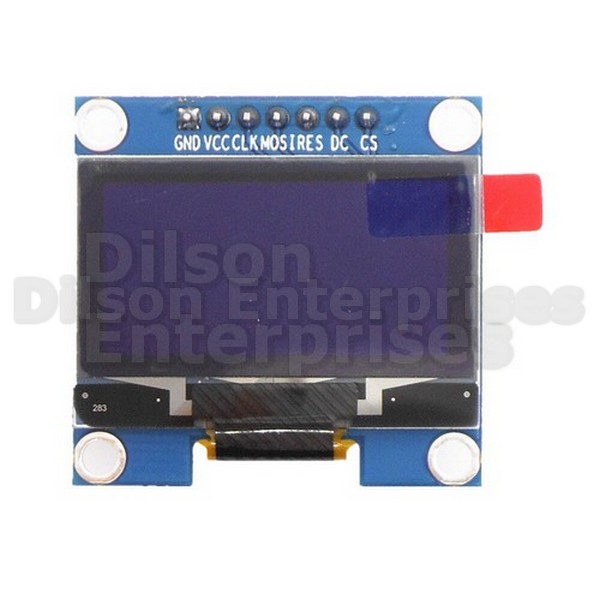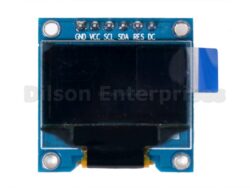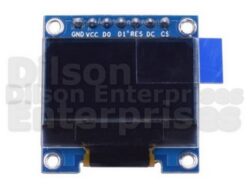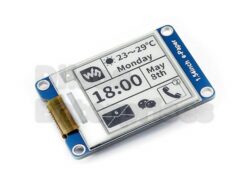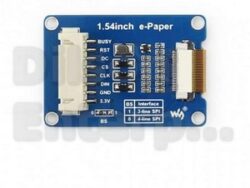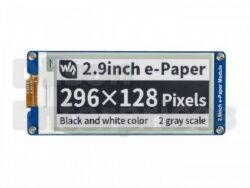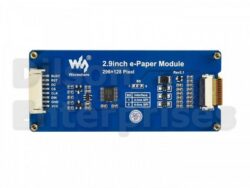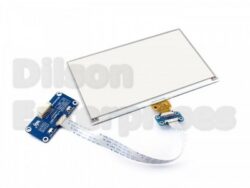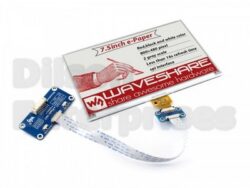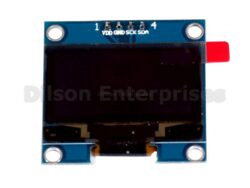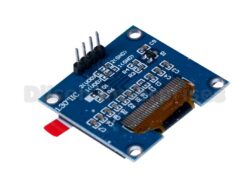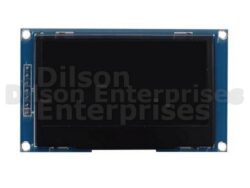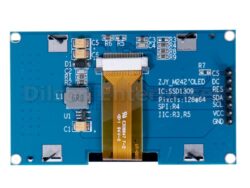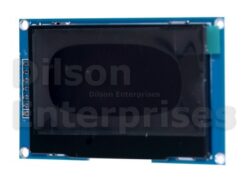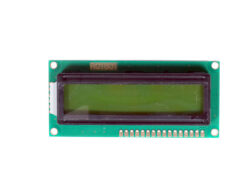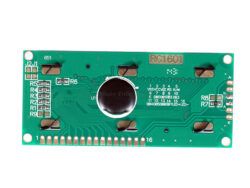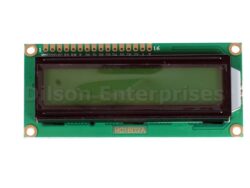OLED 7pin 128×64 Show Module 1.3″ Blue White Colour
OLED’s are the future of displays, as they possess some of the greatest advantages over both conventional display technologies of LCD’s and LED ‘s. The most attractive thing about using the OLED displays is that they do not need a backlight like conventional LCD/LED screens. The organic material itself has a property known as Electroluminescence (EL), which causes the material to “glow” when stimulated by a current or an electric field. Best energy saving displays ever!!! This 1.3″ OLED Display Module offers 128×64-pixel resolution.
They are featuring much less thickness than LCD displays with good brightness and produce better and true colors. This OLED Display Module is very compact and will add a great ever user interface experience to your Arduino project. The connection of this display with Arduino is made through the I2C (also called as IIC) serial or SPI interface. The 1.3″ OLED Display Module produces blue text on black background with very good contrast when supplied with DC 2.8V supply. The OLED Display Modules also offers a very wide viewing angle of about greater than 160°.
14
People watching this product now!
Description
Options: 1.3 Inch Blue White OLED Show
- No want of the backlight
- The show is self-illuminating
- Energy requirement is low
- Pixel Colour: Blue (High 128×16 Pixels
- White (Backside 128×48 Pixels)
- They’re providing the big viewing angle
- Full Suitable with Arduino
- Manufacturing facility configured for SPI protocol (can simply change to IIC)
APPLICATIONS: 1.3 Inch Blue White OLED Show
- Utilized in shopper electronics.
- Used for Smartwatch, cell phone, and MP3 shows.
- Small stage gaming shows.
- Wide selection of viewing angle allow for use in low gentle.
The 1.3″ OLED 7 pin 128×64 Show Module produces blue textual content on black background with superb distinction when equipped with DC 2.8V provide. The OLED Show Modules additionally provides a really extensive viewing angle of about higher than 160°. The connection of this show with Arduino is made by the I2C (additionally referred to as as IIC) serial or SPI interface.
Content material- OLED’s are the way forward for shows, as they possess a number of the best benefits over each typical show applied sciences of LCD’s and LED ‘s. Essentially the most engaging factor about utilizing the OLED shows is that they’re doing not want a backlight like typical LCD/LED screens. The natural materials itself has a property often known as Electroluminescence (EL), which causes the fabric to “glow” when stimulated by a present or an electrical discipline. Finest power saving shows ever!!! This 1.3″ OLED Show Module provides 128×64-pixel decision. They’re that includes a lot much less thickness than LCD shows with good brightness and produce higher and true colours. This OLED Show Module may be very compact and can add an ideal ever person interface expertise to your Arduino challenge. The connection of this show with Arduino is made by the I2C (additionally referred to as as IIC) serial or SPI interface. The 1.3″ OLED Show Module produces blue textual content on black background with glorious distinction when furnished with DC 2.8V provide. The OLED Show Modules additionally provides a really extensive viewing angle of about higher than 160°.
OLED possesses excessive software potential for nearly every kind of shows and is taken into account the final phrase expertise for subsequent era of flat-panel shows. OLEDs primary construction consists of natural supplies positioned between the cathode and subsequently the anode, which consists {of electrical} conductive clear Indium Tin Oxide (ITO).
The natural supplies compose a multi-layered skinny movie, which includes the opening Transporting Layer (HTL), Emission Layer (EML) and subsequently the Electron Transporting Layer (ETL). By making use of the suitable electrical voltage, holes and electrons are injected into the EML from the anode and subsequently the cathode, respectively. The holes and electrons mix contained in the EML to make excitons, after which electro luminescence happens. The switch materials, emission layer materials and choice of electrode are the important thing elements that decide the usual of OLED elements.
It helps for a number of working modes: 4-wire SPI
OLED monochrome 128×64 dot matrix show module. The traits of this show module are excessive brightness, self-emission, excessive distinction ratio, slim/skinny define, extensive viewing angle, extensive temperature vary and low energy consumption. It is energy requirement is low and is self-illuminating.
It’s broadly utilized in shopper electronics, Smartwatch, cell phone, and MP3 shows, Small stage gaming shows.
Wide selection of viewing angle allow to be utilized in low gentle.


